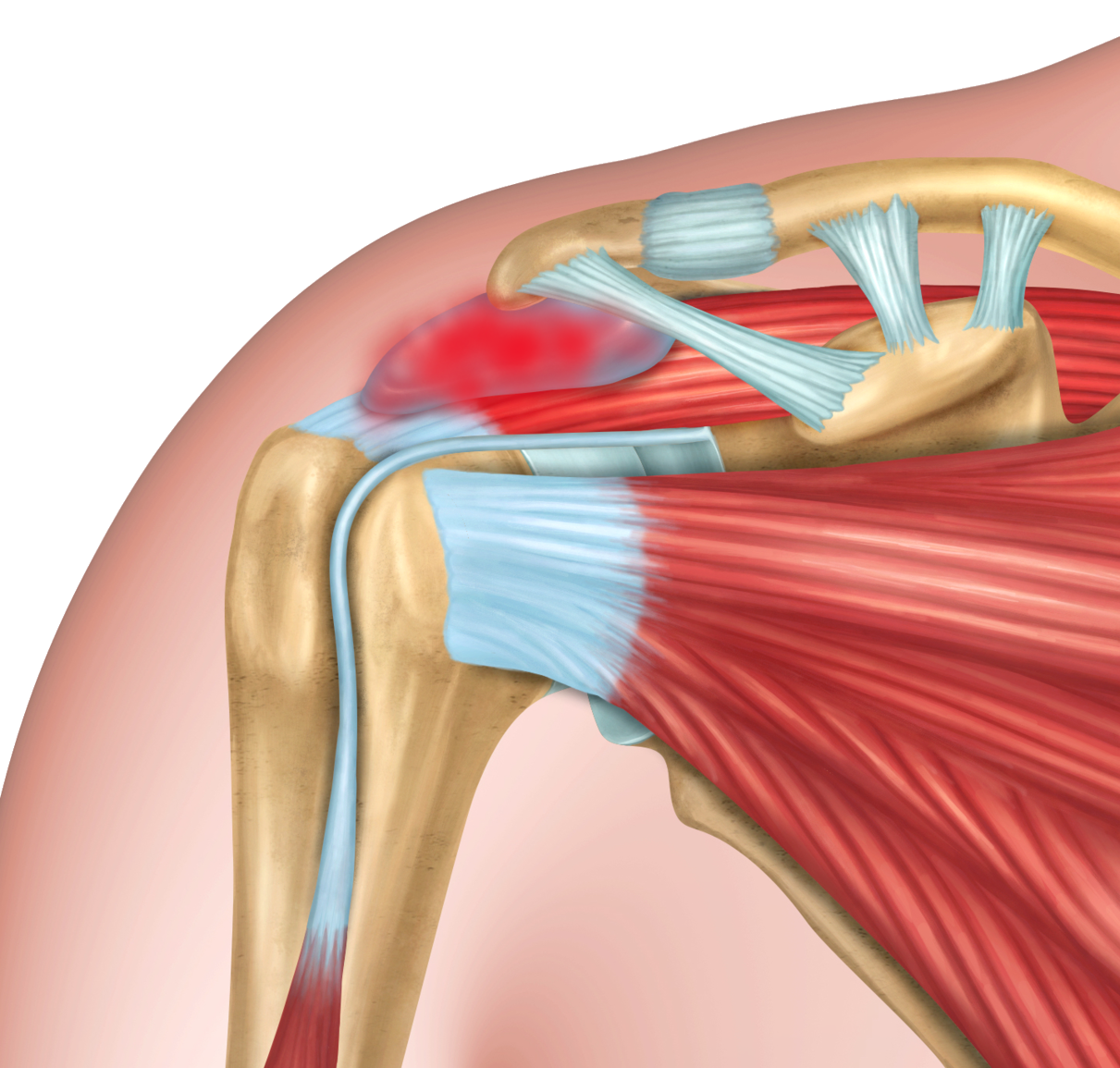Shoulder Subacromial Impingement

Subacromial impingement is a collection of symptoms resulting from irritation of the tissues in the subacromial space of the shoulder. The subacromial space is an area on top of the shoulder joint. The roof of the subacromial space is the acromion (tip of the shoulder blade) and clavicle (collar bone), while the floor is the rotator cuff tendons and head of the humerus.
Impingement can be caused by inflammation of the bursa (normal fluid filled sac in the shoulder), from a calcific deposit, or inflammation of the rotator cuff tendons which pass through the subacromial space. Impingement can also occur from dysfunction in shoulder muscle co-ordination leading to an abnormal positioning of the shoulder blade. This can occur following a shoulder injury.
Impingement can be precipitated by particular activities such as painting a ceiling, pruning a tree, or following sporting activities such a swimming or tennis. Symptoms can also arise from a minor injury such as from a trip or fall.
People usually find particular movements cause pain and a ‘catching’ feeling. Such movements are typically reaching overhead to get something out of a cupboard, or reaching behind to get something from the rear car seat. Other people report less consistent causes of their pain, as well as stiffness.
Initially, painkillers and physiotherapy can be sufficient to improve symptoms. Physiotherapy is particularly important to address abnormal posture of the shoulder and to open up the subacromial space, as well as enhancing the control of the muscles around the shoulder, allowing the shoulder to work effectively.
You may go on to have a steroid injection into the subacromial space of your shoulder. This can work well with physiotherapy, as well as providing diagnostic information to confirm the location of the problem.
In cases resistant to non-surgical treatment, keyhole surgery may be required. The aim of surgery is to remove any inflamed bursa, and to increase the space available for the rotator cuff tendons to run by removing some of the bone from the underside of the acromion. This keyhole (arthroscopic) surgery is usually performed as a daycase (home the same day) procedure.
After surgery the physiotherapy team will work with you to optimise your core stability, stabilise the shoulder and the shoulder blade and ensure they are working effectively. You will have a sling for comfort for a week or so but this can be discarded as soon as you feel able. Light two-handed activities can start after 2 weeks but you should avoid those provocative activities which previously caused pain such as reaching out abruptly or repetitive overhead activities. Moderate lifting can start at 4 – 6 weeks.
While the majority of people get better with physiotherapy and injections, those still with pain usually do well following surgery.